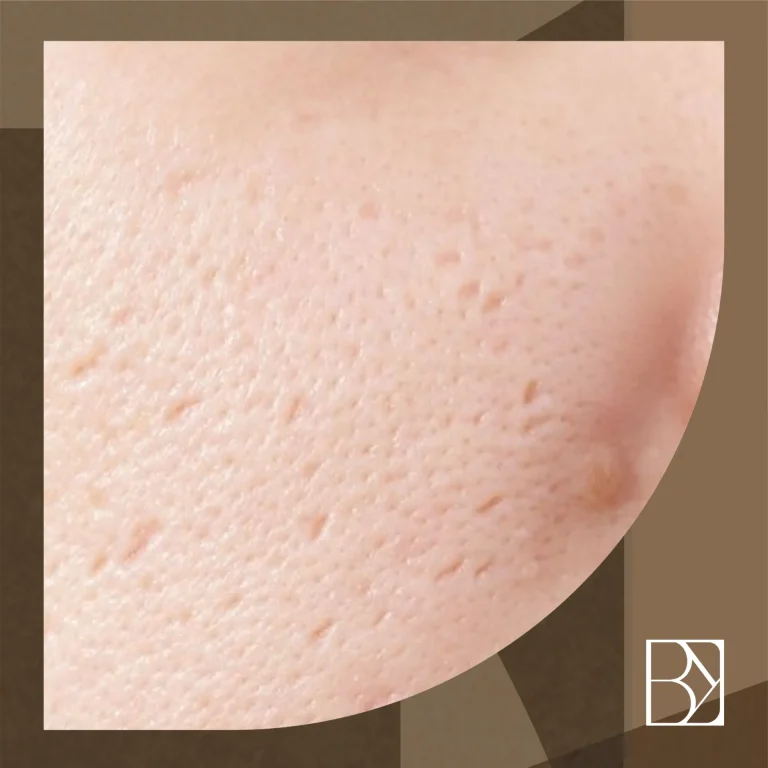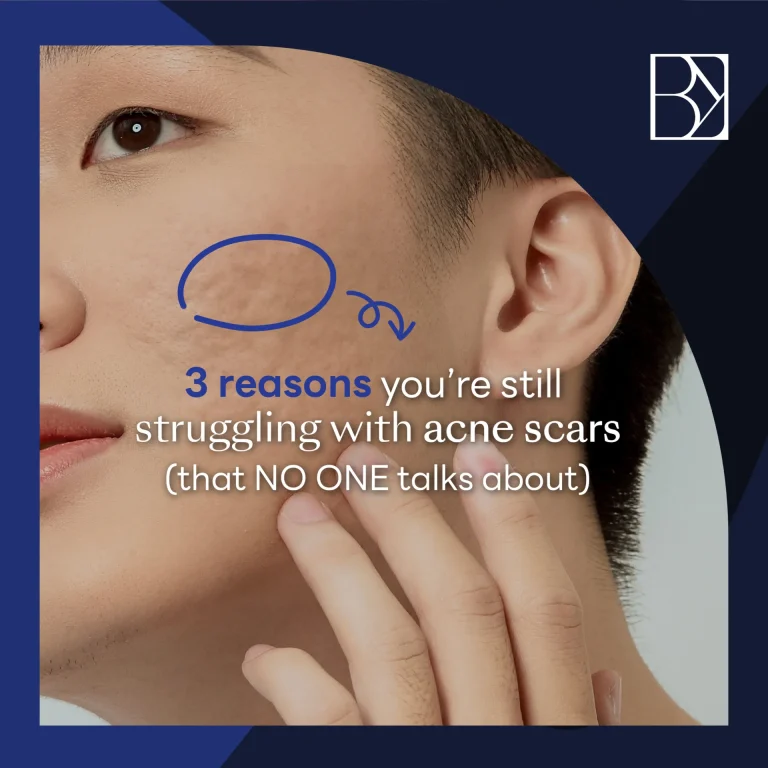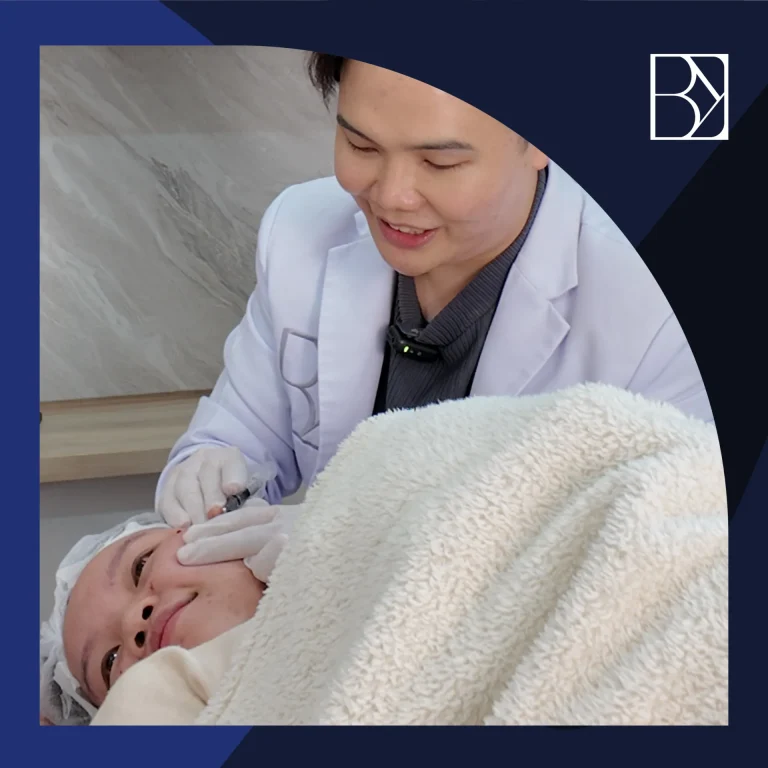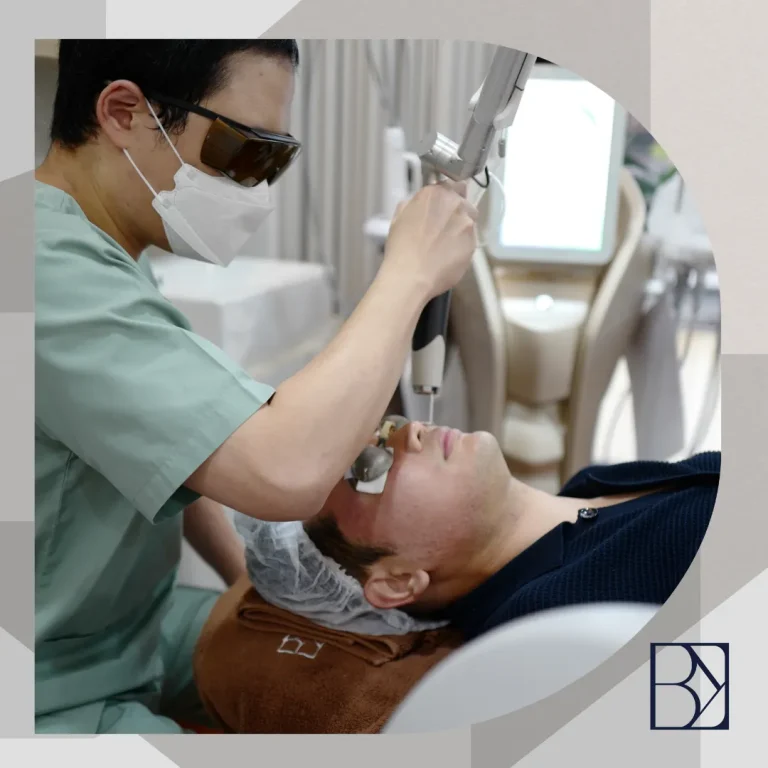Choosing the right acne scar treatment can feel overwhelming. If you’ve been googling solutions or sitting through confusing consultations, you’re not alone. Before you invest your money—or your skin—get familiar with these 20 must-know terms. Understanding them will help you ask better questions, avoid wrong treatments, and recognize when a clinic truly knows what it’s doing.
Whether you’re a parent bringing your teen in, an expat living in Thailand, or someone flying in—this guide is for you.
1. Fibrous Bands
These are strong connective tissues under the skin that pull the base of an acne scar downward, creating a visible dent. If these aren’t treated first, no surface treatment will work well.
Why it matters: Treatments like laser or RF can’t lift a scar that’s literally anchored down.
2. Boxcar Scars
Wide, shallow-to-medium-depth acne scars with well-defined edges, usually rectangular or oval.
Tip: These often respond well to Subcision, Program Biostimulators, and Program Pico Laser.
3. Rolling Scars
These cause a wavy or uneven skin texture and are usually caused by underlying tissue loss and fibrous bands.
Best treated with: Subcision to release bands, followed by collagen-boosting treatments.
4. Ice Pick Scars
Deep, narrow scars that look like the skin was pierced with a needle.
Note: These are not suitable for laser alone. They often need TCA cross, a strong acid that rebuilds scar edges.
5. Subcision
A minor surgical procedure using a special needle to cut the fibrous bands tethering scars down.
Why it’s powerful: It lifts the base of the acne scar from underneath—essential before any other treatments.
6. Microneedling RF
Combines microneedles with radiofrequency energy to stimulate deep collagen regeneration.
Think of it as: Controlled micro-wounding plus heat = smoother, tighter skin over time.
7. Pico Laser
A high-speed laser that works in trillionths of a second to resurface skin, fade pigmentation, and soften scar edges.
Benefits: Minimal downtime, effective on both texture and tone.
8. Biostimulator
An injectable that tells your skin to make more collagen over time.
Common types: PLLA (like Sculptra) and CaHA (like Radiesse). Unlike filler, they build your own volume gradually.
9. HA Filler
Hyaluronic Acid-based gel that instantly lifts and fills in certain types of shallow or boxcar scars.
Caution: Not suitable for all scar types and not a long-term solution unless combined with collagen stimulation.
10. TCA (Trichloroacetic Acid)
A strong acid used in focal applications (TCA Cross) or chemical peels to deeply resurface skin and stimulate growth.
Best for: Ice pick scars and deep texture irregularities.
11. Thread Lift (for Acne Scars)
Thin threads are inserted under the skin to lift and support sunken or loose scarred areas.
Benefit: Improves skin firmness while aiding collagen production.
12. Botox (for Acne Scars)
Not just for wrinkles—Botox can relax surrounding muscles or scar tension that makes some indentations deeper.
Ideal for: Dynamic scars that worsen with facial expressions.
13. Energy-Based Ultrasound
Uses targeted sound waves to tighten and lift sagging, scarred skin by stimulating deep collagen layers.
Known brands: Ultherapy, Sofwave.
14. Collagen Stimulation
The natural process of encouraging your skin to make more collagen, the protein responsible for smooth, plump skin.
Core principle: No scar treatment works long-term unless collagen stimulation is happening beneath the surface.
15. Scar Mapping
An in-depth analysis of your scar types, depths, and skin response patterns.
Why it’s essential: Not all scars are the same. Mapping helps personalize your treatment intelligently, not randomly.
16. Downtime
The temporary redness, swelling, peeling, or bruising after a procedure.
Know before you go: Downtime varies by treatment—from zero (Pico) to 7 days (deep subcision or strong peels).
17. Treatment Gap
Intentional waiting period between treatments to let the skin rest and recover properly.
Why it matters: Rushing treatments can overstress your skin and reduce collagen response.
18. Treatment Sequencing
The strategic order in which treatments are done—for example, subcision before biostimulator, then laser.
Analogy: Like building a house—foundation first, then structure, then finishing touches.
19. Buffer Time / Period
A healing window after subcision where the base of the scar is temporarily elevated.
Golden window: This is when fillers or biostimulators work best because the scar isn’t tethered down anymore.
20. Active Acne
Refers to current or ongoing breakouts. These must be controlled before doing scar treatments.
Rule of thumb: Treat active acne first to prevent new scars while healing old ones.
Final Thoughts: Know Before You Pay
Most failed acne scar treatments come from doing the wrong treatment at the wrong time—or skipping a critical step like subcision or mapping.
A smart patient asks:
- “Have you mapped my scar types?”
- “Is this treatment plan sequenced with buffer periods?”
- “Are we addressing fibrous bands first?”
- “What collagen stimulation method are we using?”
Don’t just pay for a machine. Pay for a “plan”.





